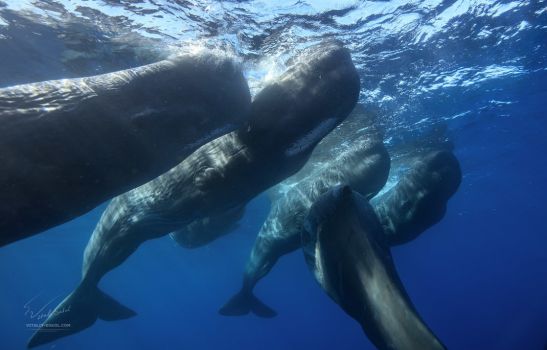May 24, 2024, 4:54 p.m.
Friday's Elk: Why Do Whales Sing? Why Do We Sing, For That Matter?
Friday's Elk

Why Do Whales Sing? Why Do We Sing, For That Matter?

In my work as a journalist, the threads of science sometimes weave together in unexpected ways. For some time now, I have been keeping an eye on a team of scientists studying whales, in the hopes of deciphering their songs with signal analysis, machine learning, and other methods from computer science. The team, which calls itself Project CETI, formed four years ago, and they’re just now starting to publish the first results of their work.
It’s been nearly 60 years since biologists first recognized that humpback whales produced strange whoops and rattles that lasted for hours at a time. Whale songs became cultural icons on best-selling albums, in Star Trek movies, and on the Golden Record that NASA flung into deep space. Other whales, scientists discovered in later decades, produce their own songs. The songs are not rigid, simple calls; they turned out to be complex and creative acts. But their meaning remained a mystery.
Project CETI is focusing on sperm whales, which talk to each other in bursts of eerie clicks that sound like orchestras of typewriters. The scientists have discovered that the whales can alter those bursts in flourishes that resemble musical improvisations. The hidden complexity of the clicks is akin to how we make sounds in order to speak. As I wrote recently in the New York Times, the Project CETI team has found what they describe as a sperm whale phonetic alphabet.
Today on the Daily podcast, I spoke to Michael Barbaro about what whales might use an alphabet to say. (The episode features plenty of whale sounds too, including my best impression of a humpback.)
It’s imaginable that whales combine their sounds into words, and organize those words according to a syntax. The Project CETI team would like to test that idea by training computers to listen to sperm whale clicks and see if they can pick up language-like patterns.
But it’s also possible that whales are not transmitting information words by word. Music might be a better metaphor: whales may sing to each other as a way of bonding. Mothers may sing cetacean lullabies to their young, males may court females with impressive arias, and pods may join in choruses to strengthen their group identity.
I’m using human language and music here as analogies—behaviors that we are familiar with, and that we can use to make sense of unfamiliar behaviors in other species. But it would be a mistake to assume we actually have a firm grasp on language and music either. Why do we have a brain and a vocal tract so exquisitely well adapted for speech? And why do we use that same anatomy to make music?
Darwin first wondered how music and language evolved, and today, some researchers are hard at work trying to find an answer. In another story I just published, I took a look at one particularly intriguing study, in which a team of music experts analyzed songs that they sang themselves. You can read about the songs in my story, and you can listen to some of them as well. The fact that our own powers of music and language are still so mysterious makes me skeptical that we will crack the mystery of whale songs anytime soon.